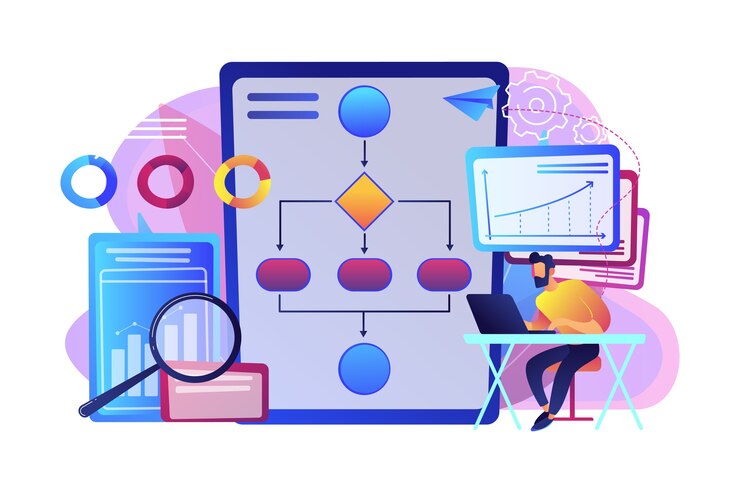Global Captive Centers or IT Outsourcing Which One to Choose?
Captive centers and IT outsourcing have been in the limelight for quite some time. In the recent past, Global Captive Centers (GCCs) started gaining momentum as more companies became outsourcing partners. However, many still need to know the pros and cons of outsourcing and global captive centers.
To make this decision smoother for you, we have highlighted the major differences between these two outsourcing models and how they can benefit your business.
As a first step, it is important to understand the concept of GCCs and outsourcing.
Global Captive Centers (GCCs)
The captive center setup allows you to create a local team that is a part of your organization. Here, the company employs the staff and operates in a way to provide resources directly to the organization. The setup is like an extension of your organization but operates in a different location, usually in low-cost areas.
The company controls the product or service rather than delegating the work to another provider. For services, they would inspect the customer and product life-cycle from beginning to ends, such as product creation and delivery.
IT Outsourcing to Third Parties
Outsourcing to third parties is when an organization recruits another organization to carry out tasks, handle operations, or provide service delivery. However, it involves assigning all responsibilities for operations to the third-party provider.
Outsourcing can save costs and improve efficiency, which benefits the whole organization. When a company outsources, its processes will vary based on the industry, location, level of complexity, and other factors. A reliable review system is necessary to maintain a good level of control.
Let us understand these differences in-depth and how companies should choose the two options.
Factors to consider for making the right choice
Because the market is rapidly growing, there is high-cost competition. In response, many companies are choosing to outsource to third-party providers to reduce these costs and better suit their business needs.
However, some companies prefer to keep things in-house by creating their captive model. This allows them to maintain control over security and authorization, two things important to most businesses. In the end, it comes down to what each company values most.
Investment Budget Availability
A disadvantage of global captive centers is that they are more expensive than third-party outsourcing. Land required for building construction, maintenance fees, skilled staff, and technological investments. Significant investment is needed to cover equipment and infrastructure costs.
An outsourcing model is a great option for companies because it cuts overhead costs. When a company outsources, they only need to pay for the required hours, which is much cheaper than building a captive center.
Highs and Lows of Return on investment
Even though captives can be costly, they can be worth it if they offer high returns. If your company has long-term growth goals, don’t let the cost of opening a captive discourage you. Just be aware that it could take up to four years to see results.
Outsourcing is a great way for companies to ensure stability and see faster investment returns. Since there is no need for capital expenditure when outsourcing, companies can expect a higher ROI in a shorter time (approximately two years).
Operations Scalability
The size or scope of the operations a company plans to outsource from its primary office is a crucial deciding factor to consider. Companies that only anticipate offloading a small amount of work may not find opening up a captive center beneficial. With such a low volume of work unlikely to generate much revenue, it wouldn’t make sense to justify the expensive capital investments needed to establish a captive center.
Opening a captive can be viable for companies looking to scale up their operations. The ROI will be greater in the long run, but companies should keep in mind that scaling up could require increasing the number of employees or opening a larger office.
More often than not, the extra cost is justifiable for the ROI it provides in the long run. Decision-makers must weigh all short-term and long-term benefits and costs before moving to make the best move for their company.
Highly Talented Pool Access
In a captive model, it can be difficult for small companies always to find the best employees. Affordable labor markets are extremely competitive, so companies need to be strategic about where they look for employees. Other than some well-known companies, attracting qualified, quality employees might take a lot of work, affecting the quality of work and ROI.
Outsourcing companies have an established presence and a skilled and experienced workforce. They have been around longer than captive centers, so they have developed industry best practices, greater efficiency in operations, and more advanced technology.
Technology not only enables better communication between companies and a remote workforce, but it also helps to ensure greater coordination with outsourcing partners. This, in turn, helps create a more efficient and cohesive work environment.
Compliance and Data Security
Companies that are handling a lot of sensitive information will usually opt to open their captive center rather than outsource the work. The main reason is that they will have full visibility and control over the data and can thus ensure compliance with any regulations. By owning the center, the company can avoid potential data breaches that might occur if they outsource the work.
In today’s market, most outsourcing companies have tightened security and employ industry best practices regarding data protection. With GDPR now in effect, outsourcing firms have become even more careful about safeguarding customer data. It is not uncommon for them to have better security than captive centers since they often have access to more advanced technology.
So what is your choice? GCC or IT Outsourcing? Or Hybrid?
Both captive and outsourcing models offer several benefits for companies. Ultimately, the best fit will depend upon a company’s short-term and long-term goals. If quick returns on time-bound projects are a priority, outsourcing can help companies achieve their objectives.
There are many benefits to using a hybrid model for your company’s needs. For example, you can save money by outsourcing less risky tasks like invoice processing and cash application but still keep a captive center for other processes that need to be centralized. This way, you can achieve your company’s goals quickly while maintaining control over certain aspects of the business.
 English
English 




























































































































































